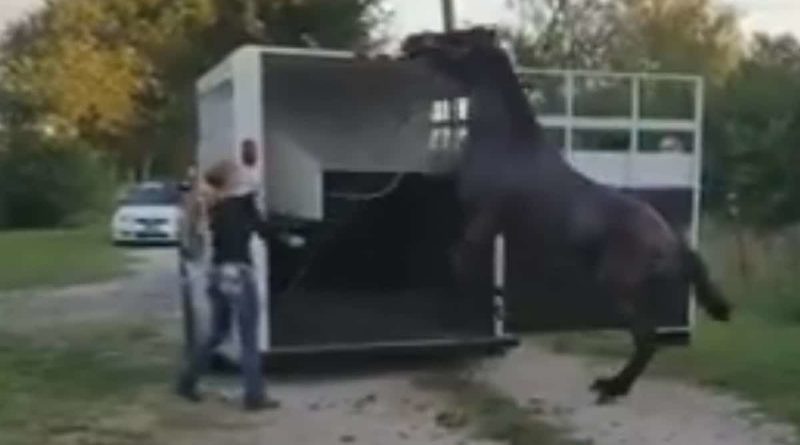Empathy failure: Bad timing and excessive force
This video has been circulating on Facebook recently and is a graphic example of someone failing to empathise with the horse and failing to understand the training method they are trying to use.
Negative Reinforcement
You may have heard the phrase “make the right thing easy and the wrong thinggo hard”. This is a catchy way to allude to training with negative reinforcement – or ‘pressure-release’ training.
The word negative in this context does not mean bad. It refers to the removal of something – in this case pressure – when the horse produces the desired behaviour. It is one of the four quadrants of operant conditioning (the others are positive reinforcement, negative punishment and positive punishment).
With pressure-release training methods, the trainer applies pressure until the horse does the right thing, and then the pressure is instantly released. This release reinforces the behaviour and good timing is essential. It effectively teaches the horse what they have to do to avoid or escape the pressure.
The pressure itself doesn’t have to be physical and certainly doesn’t have to be painful. Simply stepping closer can be a form of psychological pressure (as used in lunging or between horses telling each other to move away) and using a neck rope to steer a bridleless horse is a form of painless physical pressure.
What is she trying to do?
In the video above, it seems the girl was trying to “make the right thing easy and the wrong thing hard” but failed to fully understand how this method works or what level of force is necessary.
Had she understood what she was doing, she would have stopped applying pressure when the horse was close to the box or even simply facing the box at first. This would have told the mare that the box is a ‘safe space’ and everywhere else is unpleasant by comparison.
As the horse started to show signs of thinking about stepping on, she would have stood quietly and waited and only applied pressure when the horse moved away again. This would have refined the mare’s understanding so that she got the idea that moving towards the box or thinking about stepping inside were the right ways to avoid pressure.
The handler’s failure to empathise is especially striking when she actually praises the horse enthusiastically saying “good girl!” but then immediately whips the mare. This is incredibly confusing for the poor horse that has just been punished for doing the right thing!
Of course whipping the horse like this is completely unnecessary in the first place and in itself betrays a poor understanding of horse psychology and little empathy for the animal. Using pressure in a situation that is inherently fear-inducing for the horse is not the best way to achieve long-term results, let alone escalating pressure to this degree!
A better approach
In my last post I talked about using positive reinforcement to encourage horses to tolerate things that are inherently unpleasant. And about the importance of building a bank of good experiences so that one unpleasant occurrence doesn’t seem that big a deal.
Loading is another example of something inherently unpleasant for horses that benefits from this kind of positive approach. In fact, chances are that this mare would have loaded herself if the girl had simply left the box in the mare’s paddock overnight with a haynet and some feed on board!







